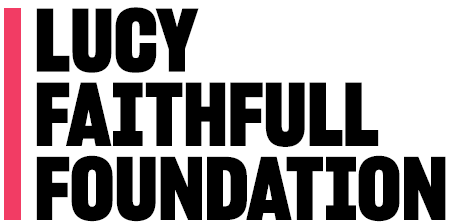Situational prevention: the practical approach to preventing child sexual abuse
Child sexual abuse is a rapidly growing issue in the UK with estimates showing that more than one in six children will be sexually abused before the age of 16. Preventing this is a challenge in the UK and globally and a solution requires tangible steps that are easy to implement and simple to understand.
The sixth in our series of Faithfull Papers looks at how situational prevention plays a key role in preventing child sexual abuse, how we all can identify risks in everyday situations, and take the necessary steps to keep children safe from harm.
We sat down with Stuart Allardyce, director of Lucy Faithfull Foundation Scotland, who explains the simple principles of situational prevention and explores how this paper can make stopping child sexual abuse practical, tangible and something that everyone can understand.
Simple, practical, applicable
Situational prevention focuses on making environments safer to deter people who might offend. It draws inspiration from crime prevention principles developed in the 1980s and applies them to safeguarding against child sexual abuse.
“The key is to eliminate excuses and create an atmosphere where potential offenders find it harder to act without detection,” explains Stuart. “Child sexual abuse prevention often seems like an abstract concept, distant from our daily lives, but the paper aims to bridge that gap by offering practical, applicable steps to keeping children safe from harm.”
“It caters not only to professionals working with children but also empowers parents, caregivers, and community members to actively contribute to child safety,” Stuart added.
Identifying risks and implementing change
Research with people who have offended found two key factors often deterred them from child sexual abuse. The first was the children themselves. “If a child was aware of the signs that an adult was looking to harm them and could act to protect themselves, this would normally be a key factor in disrupting the offending behaviour,” said Stuart.
“The other factor was that the offender said they didn't see things through if they thought they were going to be found out. And this is where the principles of situational prevention can really make a difference,” continues Stuart.
Think the unthinkable
The paper asks the reader to embark on a thought experiment, consider the previously unthinkable and reflect on the risks to children in all our lives. By understanding where risks lie – be it online, in school, in youth clubs, or even at home – individuals can take proactive steps to prevent harm. The focus is on initiating conversations, researching how your child can best be protected from harm.
Addressing the paper’s methodology, Stuart said: “it’s refreshingly simple. It urges everyone to assess potential risks for children and identify changes that could enhance their safety.”
A light-bulb moment
Despite a lack of academic research into situational prevention, the paper draws from more than two decades of applying the principles throughout our clinical work. “The goal is to showcase real-world examples and case studies that demonstrate the effectiveness of this approach in diverse settings,” says Stuart.
And Stuart hopes that this paper will inspire a “light-bulb moment” in readers. “By highlighting what successful interventions look like, this paper aims to educate and help us all to implement changes and to foster a collective commitment to child safety,” he elaborated.
Switching the focus from individuals to environment
The paper also signals a shift from focusing solely on individuals to addressing the environments in which abuse occurs. “Two important factors that the paper considers are active bystander interventions and low-level concern policies that could be put in place to encourage proactivity,” notes Stuart.
“By encouraging transparency, guardianship, and active bystander interventions, we aim to disrupt the incremental boundary violations that precede abuse. Low-level concern policies provide a mechanism for reporting and addressing behaviours that may not meet the threshold for disciplinary action but are nonetheless concerning,” Stuart explains.
“Situational prevention can include simple solutions such as moving bookshelves to enhance visibility in libraries and empowering younger staff in leisure facilities to intervene. This paper offers tangible solutions to the complex problem of child sexual abuse,” he added.
Community-based responses
One of the examples in the paper describes a project with Australian communities where there were significant issues in relation to peer-on-peer sexual violence that was taking place in parks, mainly at weekends where teenagers were often drinking, alongside consensual or semi-consensual sexual activity taking place. “There was a culture where quite young children were witnessing that sexual behaviour and seeing it as a rite of passage,” says Stuart.
The paper highlights the power of community-based responses. “By involving local communities, professionals, and key stakeholders, comprehensive solutions were implemented, ranging from improved lighting to community patrols. This approach showcases the effectiveness of a public health model in addressing child sexual abuse,” Stuart says.
A beacon of practicality
“There's no one solution to preventing sexual abuse, but once you understand how abuse happens you can begin to address it,” emphasised Stuart.
In our journey towards preventing child sexual abuse, Situational prevention emerges as a beacon of practicality and effectiveness. This paper encourages us to shift our focus from theoretical approaches to tangible actions, fostering safer environments for our children.
“By understanding how we can make small changes to environments, we can take the simple, practical and applicable steps to prevent child sexual abuse – before it happens,” Stuart concluded.
Get involved
If you would like to donate to help us continue our ground-breaking work to prevent child sexual abuse, click here.
Further research and publications
For free information and research to help adults, parents and carers and professionals protect children from sexual abuse, click here.
To read more of our Faithfull Papers, click here.
Share with your networks
On Facebook, we’re Stop It Now! UK and Ireland
On X (Twitter), we’re @Lucy_Faithfull_
On LinkedIn, we’re Lucy Faithfull Foundation
On Instagram, we’re @lucyfaithfullfoundation
Sign up for news & updates
Fill in our newsletter form hereTo support our work to protect children, donate today.
Donate today





